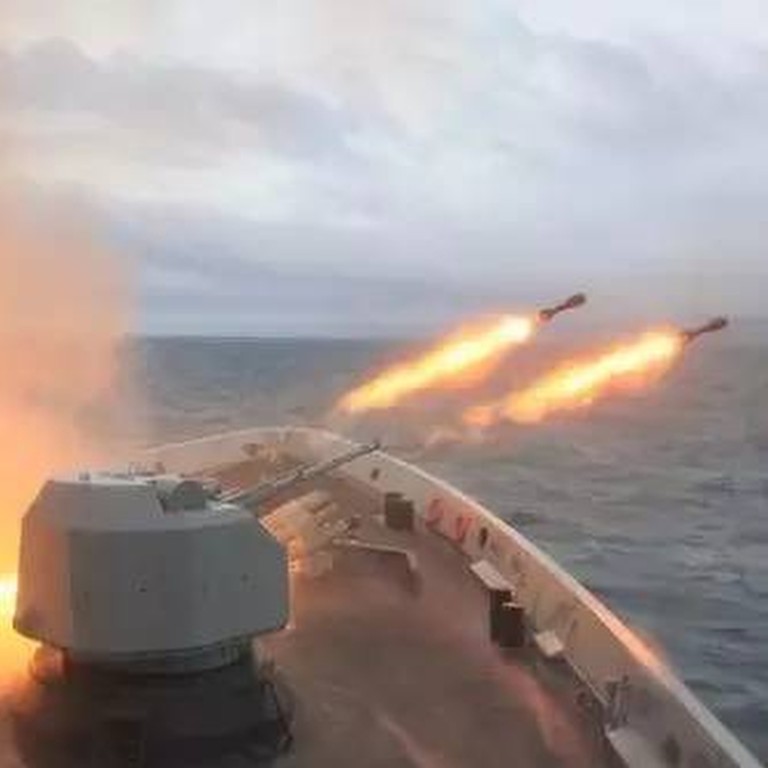
China brings its navy drills closer to home to focus on core issue: Taiwan
- Data compiled by the SCMP finds the PLA Navy sailed further to carry out drills before 2017
- While naval exercises are in keeping with China’s stated goal, experts are divided over the likelihood of it attempting to conquer Taiwan in the near future
An assessment of Chinese naval drills in the past decade by the South China Morning Post indicates that the navy’s attention shifted in 2017, the year state media reported that the military began exercises to conquer and control islands.
In 2012, Beijing performed five drills in the western Pacific, including debut exercises in the area by the South Sea Fleet and North Sea Fleet.
Taiwan scrambles warships as PLA aircraft carrier heads for Pacific
Between 2013 and 2017, the Chinese navy continued training in the South China Sea but also travelled to more distant locations.
In 2013, a fleet was spotted sailing for the first time through the Soya Strait. And in May 2016, China sent a fleet which separated into three groups – sailing to areas of the South China Sea, the east Indian Ocean and the western Pacific – to conduct a range of drills.
While some drills were never reported, the data set shows that Taiwan was not a priority until 2017, when attention turned to exercises designed to test the force’s ability to take islands.
In late March that year, an assault landing group under the South Sea Fleet exercised “assault landing and island control”. In August, the marine corps conducted an assault landing exercise in western Guangdong province, according to the navy’s official website and state news agency Xinhua.
The number of military exercises has also noticeably increased, especially since 2020 when China conducted 13 naval exercises throughout the year, involving the Shandong aircraft carrier, frigates, destroyers, amphibious vessels and warplanes.
The trend is even clearer this year: China has conducted 20 naval exercises in the first half of the year alone.
In these drills, China deployed almost all its advanced military equipment, including amphibious assault vehicles, amphibious infantry fighting vehicles, self-propelled howitzers, aircraft carriers, frigates, fighter jets and attack helicopters.
In early April, China’s first aircraft carrier led a flotilla of five other warships in exercises and training drills in waters east of Taiwan, unnerving the island. The defence ministry said the drill was routine.
In May, the navy put its ability to attack submarines to the test, using its newly commissioned amphibious assault landing vessels to do marine penetration and island conquering exercises.
The latest example came on Friday, when the Chinese army and navy held joint amphibious landing exercises in waters off the coastal province of Fujian.
Malcolm Davis, a senior analyst specialising in Chinese security at the Australian Strategic Policy Institute in Canberra, said this trend showed that the PLA Navy was focusing more on preparing for potential contingencies across the Taiwan Strait.
How China’s PLA Navy could close a perception gap in the South China Sea
“We look at these activities, we look at their capability development and the language of their official statements, and the ‘indicators and warnings’ do align with concerns that China is intending to have the ability to take Taiwan by force within this decade if it cannot get Taipei to accept unification on Beijing’s terms through diplomatic means,” Davis said.
Timothy Heath, a senior security expert at the Rand Corporation, said China had been increasing its naval and air activity around Taiwan as well as past the “first island chain”. The chain stretches from Japan to Taiwan and the Philippines.
“The increase in training activity near Taiwan is driven in part by a desire to intimidate Taiwan but also to improve the PLA Navy’s ability to carry out Taiwan-related combat missions,” Heath said.
However, Song Zhongping, a former PLA instructor, disagreed.
“I don’t think the Chinese military’s goal has shifted. They always focused on war preparation near its coast while attaching importance to non-war military operations, like humanitarian relief in places far away from its shores.”
Why Chinese navy’s latest drill hints at broader ambitions
Derek Grossman, another specialist from Rand, said the PLA’s development in the past was another key to this increasing number of naval exercises near Taiwan.
“The centre of gravity for PLA modernisation and ‘professionalisation’ over the past few decades has been to become capable of launching a successful amphibious landing against Taiwan. So, from that perspective, perfecting naval operations makes much sense,” Grossman said.
“At a minimum, China is using military exercises increasingly to signal its frustration, not only with the direction of Taiwanese politics, but also strengthening US-Taiwan security ties.”

